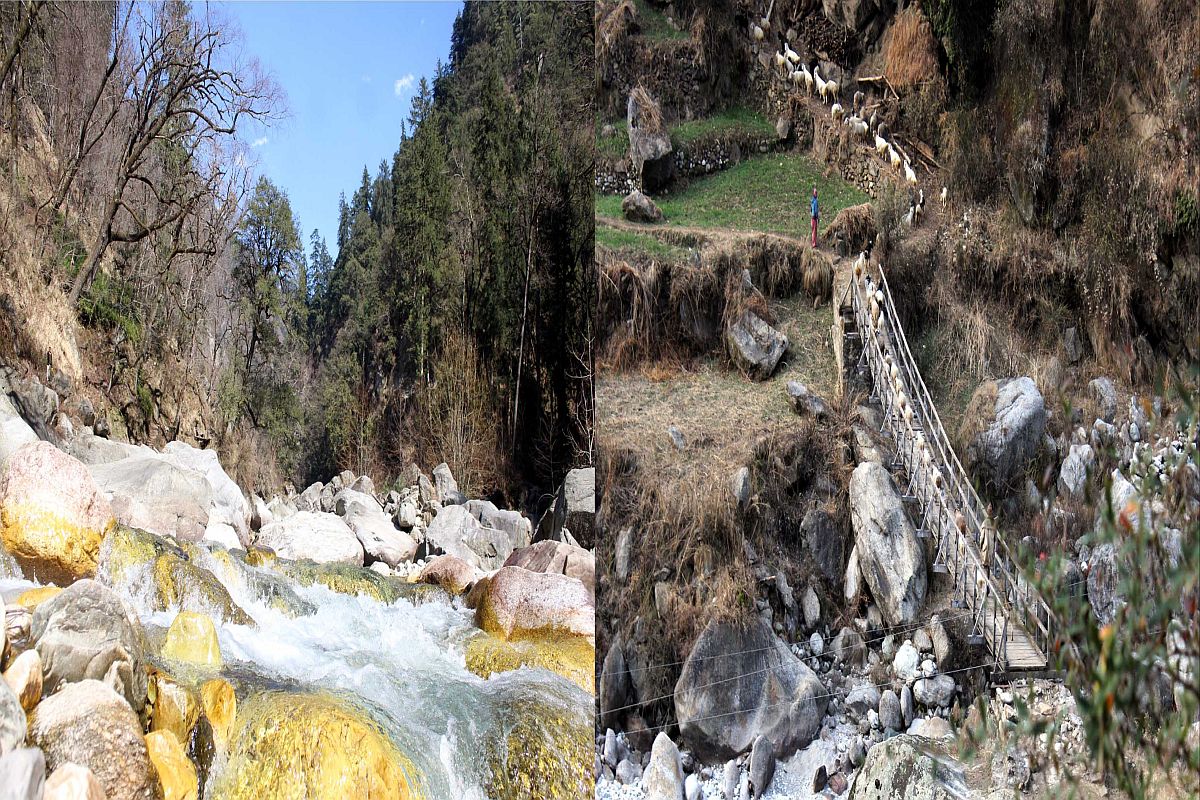J&K CM Omar Abdullah lays stress on Himachal Pradesh-type laws to protect agricultural land
The Chief Minister noted that Himachal Pradesh has adopted a strict policy in this regard and stressed the adoption of a similar policy in J&K.
Sensing that it may offer opportunity to hunters in the interior areas near forests, the wild life wing has intensified patrolling and intelligence in Great Himalayan National Park, the richest biodiversity spot in Kullul

The wildlife wing of Himachal Pradesh has gone extra cautious, fearing a rise in poaching during lockdown. (Photo: SNS)
The wildlife wing of Himachal Pradesh has gone extra cautious, fearing a rise in poaching during lockdown and curfew over Covid-19 pandemic in the state.
The authorities at the Great Himalayan National Park (GNHP) in interiors of Kullu district, which is tipped as India’s richest biodiversity spot, have since intensified patrolling and intelligence, besides using camera traps to catch the illegal activity.
Advertisement
“We are taking precautions in the lockdown as people, including locals or migrants (who work as labourers and are living in the GHNP eco-zone) are free, without any job for past two weeks. Some may take advantage of absence of activity and movement of people in the interior areas and sneak into the forests for hunting or even illegal tree felling very easily these days to earn money,” said Divisional Forest Officer (DFO), GHNP, Suneet Bhardwaj.
Advertisement
He said there were specific instructions from forest authorities and the wild life wing high ups that the field staff should be more vigilant during the national lockdown as it could be an opportunity for illicit tree felling or hunting.
Only last week, a local poacher was apprehended in Sainj valley in the GHNP and the wildlife staff seized a licensed gun, two catridges and Himalayan Monal’s crest. The accused, who lives in a village that involves one day trek (22 kilometres away from the road) however, fled. “We have made the teams to track him,” said the DFO.
As per field reports while the Police are busy with enforcement of curfew in the crowded areas to prevent spread of Covid-19, the remote areas, which are nearer to the forest areas in Himachal and have a very sparse population, are going unchecked. This increases the risk for illegal activities in forest areas.
The GHNP houses 160 villages and hamlets and nits boundaries are connected to Pin Valley National Park and Rupi Bhawa wild life sanctuary.
After the inclusion of two wildlife sanctuaries in the park, the total area, known as Great Himalayan National Park Conservation Area spreads to 1171 square kilometres. The GHNP was declared as UNESCO Heritage site in 2014 and its core area is sans any road network.
Notified in the year 1999, the GHNP is shelter to 203 bird species, including Western Tragopan, Himalayan Monal, Koklas, cheer pheasant and white crested Kalij. GHNP is one of the two parks in the world to have viable population of Western Tragopan ( Jujurana- the state bird of Himachal). The other one is located in Pakistan. The GHNP is also home to snow leopard, Himalayan Black Bear, Brown Bear, small Antelope and a wild goat that lives on steepest cliffs.
Snow leopard is the most elusive species in GHNP, which could be spotted in highest locations, adjoining Pin Valley National Park in Spiti.
Advertisement